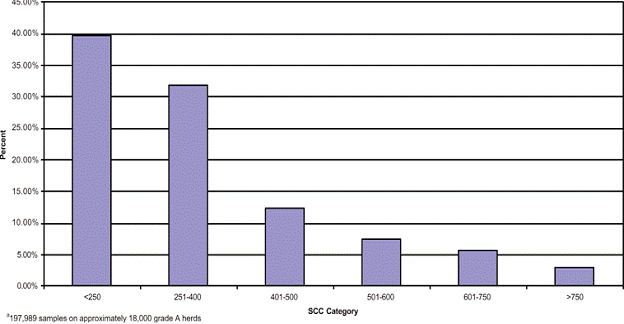|
The Seven Habits of Highly Successful Milking Routines |
|
Pamela Ruegg, Morten Dam Rasmussen, and Doug Reinemann |
|
The efficient production and harvest of high quality milk is the goal of most dairy farmers. High quality milk consists of milk that is visually appealing, free of adulteration and meets specific quality standards for somatic cell count (SCC), and bacteria. The highest quality milk usually has a SCC of less than 200,000/ml. Many Wisconsin dairy farms are producing high quality milk. In 1998, approximately 40% of Wisconsin grade A dairy producers had an average SCC of <250,000 for the year (Figure 1). |
|
Figure 1: Average Somatic Cell Counts for Grade A Wisconsin Dairy Herds Jan-Nov. 1998* |

|
Producers of high quality milk know that a consistent method of pre-milking udder hygiene and the uniform attachment of properly functioning milking machines are important. The objective of milking management is to ensure that teat cups are applied to visibly clean, well stimulated teats, milk is rapidly and efficiently harvested and milking units are removed when milking is completed. A number of milking routines are used on dairy farms. A survey of 278 Wisconsin dairy producers identified 28 different pre-milking routines that Wisconsin dairy producers are using. The "one size fits all" approach doesn't apply to milking routines, but there are seven principles of highly successful cow-preps that contribute to the production of high quality milk. |
